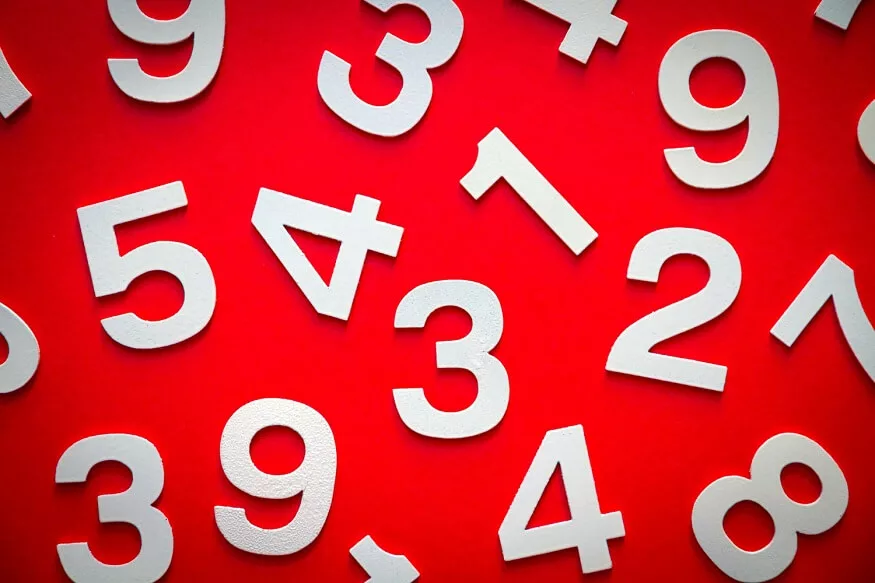Real numbers are like the fundamental foundation of math, the numbers we use all the time, whether it’s counting apples or measuring a football field. We will dive into real numbers, checking out their special traits, and even shining a light on how they show up as never-ending decimals in the mysterious world of irrational numbers.
Understanding the Basics of Real Numbers
Let’s define real numbers first to start things moving. All the numbers you encounter in daily life, whether they are whole numbers, fractions, or decimals, are considered real numbers. They resemble “real” mathematics the much that is possible.
Real number mapping on a number line is one of its most unique talents. Every real number fits comfortably someplace along this line, which runs from negative infinity to positive infinity. It’s like a mathematical highway that real numbers travel along.
Rational and Irrational Numbers
Within the world of real numbers, we have two main categories: rational and irrational numbers. These categories are like two neighbourhoods in the mathematical town of Real Numbers, each with its own unique properties.
Rational Numbers
These are the obedient numbers in the world of math, and they can be conveniently written as fractions. You can convert a number into a rational number by representing it as a fraction when both “a” and “b” are whole numbers and “b” is not 0. Rational numbers appear in decimal form as either a constant decimal, such as 0.5, or a recurring decimal, such as 0.333 (which is equal to 1/3). The main point to remember here is that you can anticipate when the decimal representation of a rational number will either conclude or start repeating itself.
Irrational Numbers
On the other side of the mathematical town, we have irrational numbers. These numbers are a bit more mysterious. Integer fractions cannot be used to express them. Irrational numbers are like the quirky artists of the real number world, and they don’t follow any particular pattern.
Decimal Expansions of Irrational Numbers
One of the most fascinating aspects of irrational numbers is their decimal expansions. Unlike rational numbers, irrational numbers have non-repeating, non-terminating decimal expansions. This means that the decimal part of an irrational number goes on forever without repeating.
Let’s explore a couple of famous irrational numbers to get a better understanding of their decimal expansions.
1. Pi (π)
Pi, often denoted as π, is a famous irrational number. Its decimal expansion starts with 3.14159265359 and goes on indefinitely without repeating. You might recognize π as the number used to calculate the circumference of a circle. Its decimal expansion never settles into a repeating pattern, making it an excellent example of an irrational number.
2. The Golden Ratio (φ)
The golden ratio, often denoted as φ, is another intriguing irrational number. Its decimal expansion begins with 1.61803398875 and continues infinitely without repeating. This number is renowned for its aesthetic properties and can be seen in various art and architectural designs.
Properties of Irrational Numbers
Irrational numbers have some fascinating properties that make them unique:
- Non-Repeating: As mentioned earlier, irrational numbers do not have repeating decimal expansions. They go on forever without showing any particular pattern.
- Non-Terminating: The decimal expansion of an irrational number does not terminate, meaning it doesn’t end with a specific digit or sequence.
- Unpredictable: There’s no way to predict the digits in the decimal expansion of an irrational number. Each digit is a surprise, making these numbers incredibly intriguing.
Also Read: Constructions: Learning to construct geometric figures like bisectors, perpendiculars, and triangles
Real Numbers: Rational and Irrational Working Together
Mathematics is like a practical key for making sense of the world, and that’s because real numbers, with all their diversity, are very much real. Just like the balance of yin and yang, rational and irrational numbers each offer unique perspectives that push the boundaries of our understanding of the universe.
Rational and irrational number coexist peacefully on the number line, complementing each other’s strengths. While rational numbers provide us with precise measurements and calculations, irrational numbers introduce an element of mystery and beauty into mathematics.
Decimal Expansions: A Window into the Real Number World
Decimal expansions are like windows that allow us to peek into the world of real numbers. Whether rational or irrational, the decimal expansion of a number reveals its inner nature. Rational numbers are like well-behaved guests at a party, following a predictable pattern in their decimal expansions. In contrast, irrational numbers are the life of the party, dancing to their own unique, never-ending tune.
Also Read: Different types of quadrilaterals: Parallelograms And Rectangles
A Glimpse into the Mathematical Universe
Understanding real numbers and their decimal expansions offers us a glimpse into the vast and fascinating universe of mathematics. These figures serve as the basis for scientific advancements, engineering achievements, and artistic creations. They assist us in measuring, calculating, and enjoying the beauty of our surroundings.
Real Numbers in Everyday Life
Real numbers are vital in our daily lives, from grocery bills to city distances. They’re the foundation of science and technology, used to describe concepts like the speed of light and electron mass.
Rational Numbers in Action
Rational numbers are especially handy when it comes to practical calculations. If you’re making a batch of chocolate chip cookies and the recipe demands 1/2 cup of sugar, what would you do? You can easily measure out half a cup, which is a rational number. Rational numbers make tasks like these straightforward and efficient.
Irrational Numbers in Nature
While irrational numbers may seem abstract, they have a surprising presence in the natural world. For example, the spirals found in seashells, hurricanes, and galaxies often follow the patterns of irrational numbers, like the golden ratio (φ). These numbers contribute to the beauty and harmony we find in nature.
The Transcendental Euler’s Number (e)
Let’s explore another remarkable real number: Euler’s number, often denoted as ‘e.’ This number is irrational and transcendental, which means it cannot be the root of any non-zero polynomial equation with integer coefficients. The decimal expansion of ‘e’ starts as 2.718281828459045…
‘E’ is fundamental in mathematics and has widespread applications in calculus, probability theory, and complex numbers. It’s like a secret code that mathematicians use to unlock various mathematical mysteries.
Irrational Numbers in Geometry
Irrational numbers also make their mark in the world of geometry. The diagonal of a square with a side length of 1 is an irrational number. The square root of 2, which cannot be stated as a fraction of integers, is the precise value of this diagonal. This finding marked an important event in mathematics history and contributed to the understanding of irrational numbers.
Also Read: Surface Areas and Volumes: Calculating surface areas and volumes of various geometric solids.
The Beauty of Real Numbers
Real numbers, whether rational or irrational, are the essential notes in the symphony of mathematics, adding precision, depth, and beauty to our pursuit of knowledge.
Into the world of real numbers, distinguishing between rational and irrational numbers. Rational numbers are well-behaved fractions with predictable decimal expansions, while irrational numbers, like π and the golden ratio, offer us non-repeating and non-terminating decimals.
Understanding real numbers and their decimal expansions provides valuable insights into mathematics and their role in our daily lives. Real numbers are the bridge between abstract mathematics and the practical world. Embrace the beauty and wonder of real numbers, for they are the threads that weave the tapestry of mathematics, creating a masterpiece that continues to inspire and amaze.
At EuroSchool, we take you on an exciting adventure into the world of real numbers. We’ll help you understand what real numbers are and explore their unique features, especially those mysterious irrational numbers with their never-ending decimal secrets. You may find out more about these numbers and how they are used in science by learning about them. By providing you with the resources you need for school and beyond, EuroSchool is here to make maths more engaging and useful.










